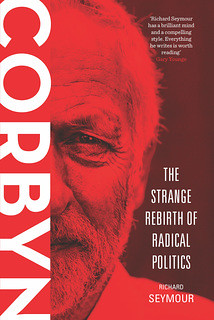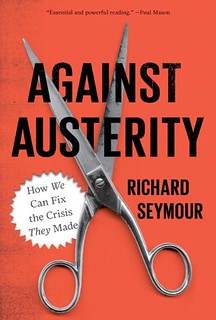Saturday, September 03, 2011
Tower Hamlets: they did not pass posted by Richard Seymour
There are a few points that need to be made about the events in Tower Hamlets today, which marks a major defeat for the English Defence League and its supporters. The EDL did not march in Tower Hamlets today. A small number of their supporters eluded police control after the 'static' protest was finished, and eventually managed to make their way to Mile End, before being rounded up. But the EDL did not march, stand, yell, or assault in Tower Hamlets today. They attacked people, and had some ungainly fights with police officers. 'Tommy Robinson' himself showed up, disguised as an orthodox rabbi (yes), and was nicked for breaching his bail conditions. Yet they did not set a foot in their intended target. I did, they didn't. So, to those points. I should warn you that I'm about to claim vindication for a particular set of perspectives. Though I'm aware that this can be boring - when have I ever been proven wrong? - it forms an important part of the analysis for why the EDL were so thoroughly defeated today.
First of all, the EDL suffered some of their worst defeats before they even arrived. Having been unable to agree a static protest point with police in advance of their planned incursion, they attempted to organise various 'muster' points from which they would proceed. They were shut out of Liverpool Street station by the RMT. They were barred by the pubs on Euston after anti-fascists rang the bars up and let them know of the EDL's plans to gather there. The attempt to offer them a rally in the car park in the Whitechapel Sainsburys fell flat, as both the mayor and Sainsburys objected. (I should explain that this supermarket overlooks Whitechapel market. Putting the EDL there to shout their racist filth and lob missiles and fire crackers would certainly have been a provocation.) In the end, the EDL had to improvise a solution, finding a pub in Liverpool Street in which to get suitably Brahms and Liszt before negotiating a limited protest in a pen at Aldgate, outside the boundaries of Tower Hamlets. All of their battles with police took place outside the borough.
The fact that the EDL lost so much before they even started belies the simplistic idea that anti-fascist mobilisation is ultimately oriented toward a set-piece confrontation between fascist and anti-fascist posses. It's a political argument, and a political struggle, in which anti-fascists are most likely to be successful when they counteract pressures to 'leave it to the police' and treat EDL activism as primarily a 'law and order' problem. The evidence of UAF placards being hosted on Whitechapel market stalls and in business windows is suggestive of hard work having paid off. Activists spent weekends giving out thousands of leaflets, holding rallies and meetings, and working hard to consolidate support for this sort of response to the EDL. One of the major rallies hosted over a thousand people in the East London Mosque just one week after Breivik went on the rampage, and featured Norwegian socialists and trade unionists urging East Enders not to allow fascists and racists to march on Tower Hamlets. That argument was evidently won among large numbers of people, and it counteracted the pressure to wind down the counter-demonstration and leave it to the police. This is how racists and fascists are defeated: patient, grassroots work, preparing the ideological terrain, organising coalitions and disorganising the opponents' strategies as much as possible.
The next point is this. The victory against the EDL shows that it was right to have a counter-demonstration. Many of those who campaigned for the ban subsequently asked people to stand down from any counter-protest. This was for two main reasons. The first is because they considered the Home Secretary's decision a 'victory' - a remarkably self-deceiving position, given what it actually entailed. The second is that they feared the potential for violence. This underestimates the seriousness and discipline of those taking part, as no one had any desire to be provoked or allow some youth to be arrested if it could be avoided. But what it also misses is that the counter-demonstration, by altering the situation on the ground and changing the calculations of the police, had a pacifying effect. Had people stood down as asked, had the East London Mosque and others acquiesced in this appeal, then the scale of mobilisation would have been much smaller. Had the counter-demonstration not taken place in Whitechapel, with large numbers of people gathered around the mosque, which was the racists' main target, the EDL would not have had such difficulty negotiating a protest point in Tower Hamlets - and quite possibly near the mosque itself. This would have been disastrous, and one can all too readily envision how the EDL would have availed themselves of the opportunity presented therein. In fairness, some of those who called for people to stand down actually participated in the event - not least Mayor Rahman himself, who spoke at the UAF rally. So the argument against the counter-demonstration was ultimately overcome by the evidence that it was a worthwhile and important event.
Third point. The Home Secretary used the call for a ban to impose a thirty day ban on marches in five London boroughs. I think this is a deliberate attempt to set a precedent that can be invoked again in more testing circumstances. The anti-fascists decided to make a point of defying this ban, in defence of a basic democratic right. They marched down Whitechapel Road toward Aldgate and formed a barrier to prevent any attack on the mosque. When it was clear that the EDL had been sent home without reaching their target, the anti-fascists broke through police lines, held a victory march back up the road, and were received in the East London Mosque. The EDL didn't march in Tower Hamlets today: UAF did.
As I said before, no one who signed the petition, nor even those who organised it, could have anticipated how the Tories would try to leverage this situation. But the fact that they did underlines just how flawed the strategy of calling for a 'ban' is. People naturally want a ban only on the EDL in such circumstances. This is never what the state delivers. What it actually does is impose a general ban on protests in the name of public order, which in practise mainly harms the anti-racists, anti-fascists and the Left. So, now would be a good time to reappraise the strategy, especially given how much energy was subsequently expended on demobilising people in order to defend the 'gain' made in the Home Secretary's march ban. And those who think it makes most sense to call for both a ban and a counter-demonstration should probably reflect on the fact that, in practise, each demand pulled in the opposite direction.
Here's some footage from today's 'victory' march:
Labels: anti-fascism, edl, english defence league, fascism, racism, tower hamlets, uaf











